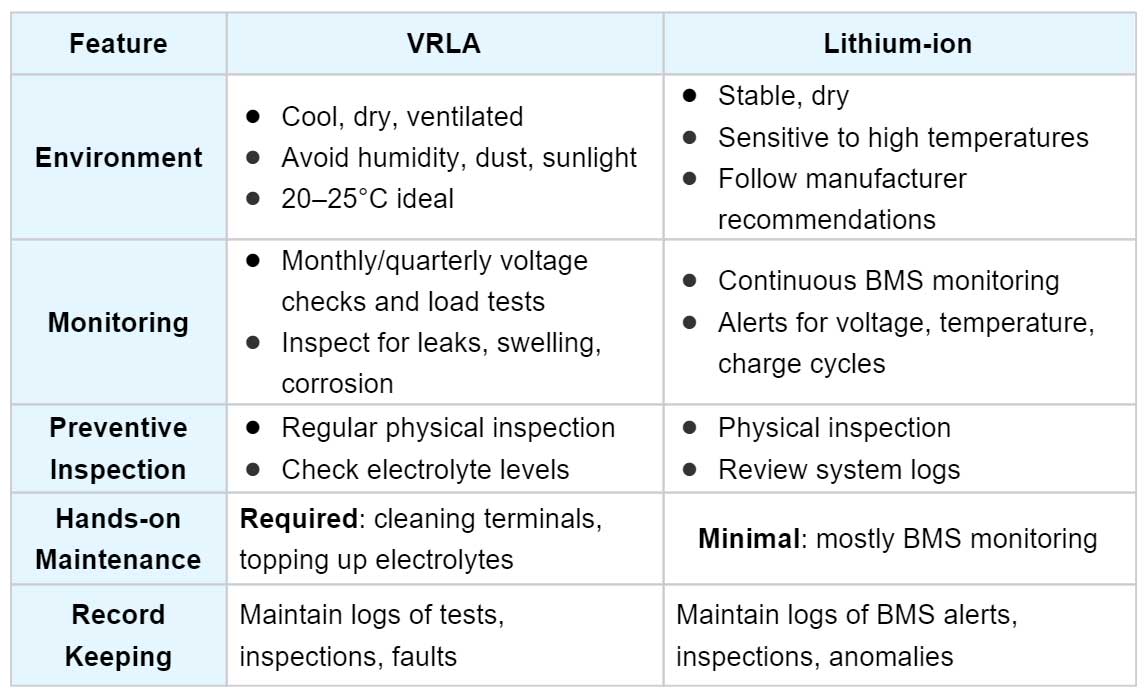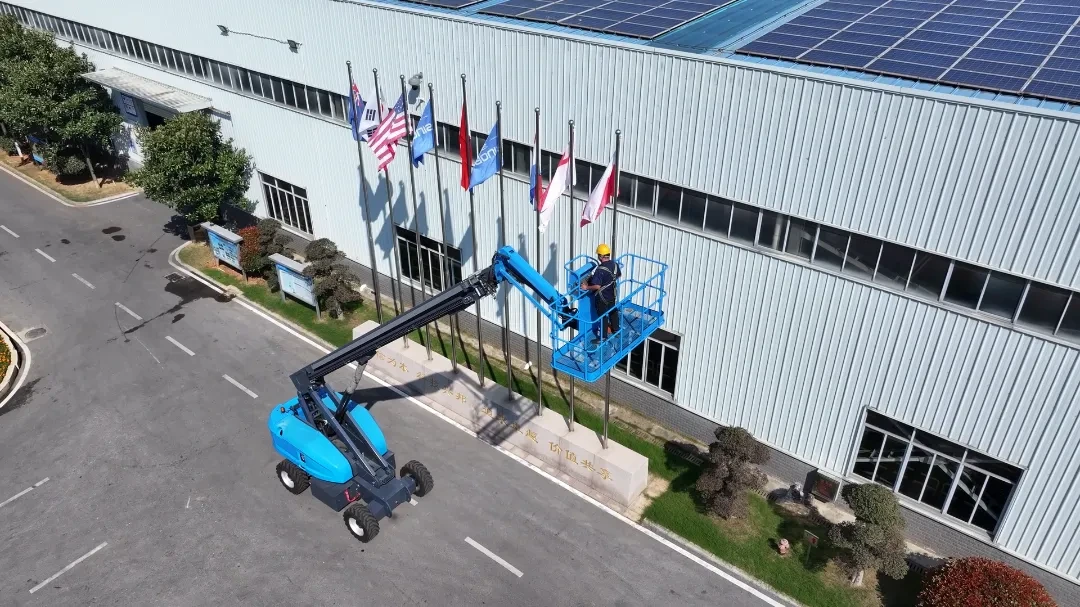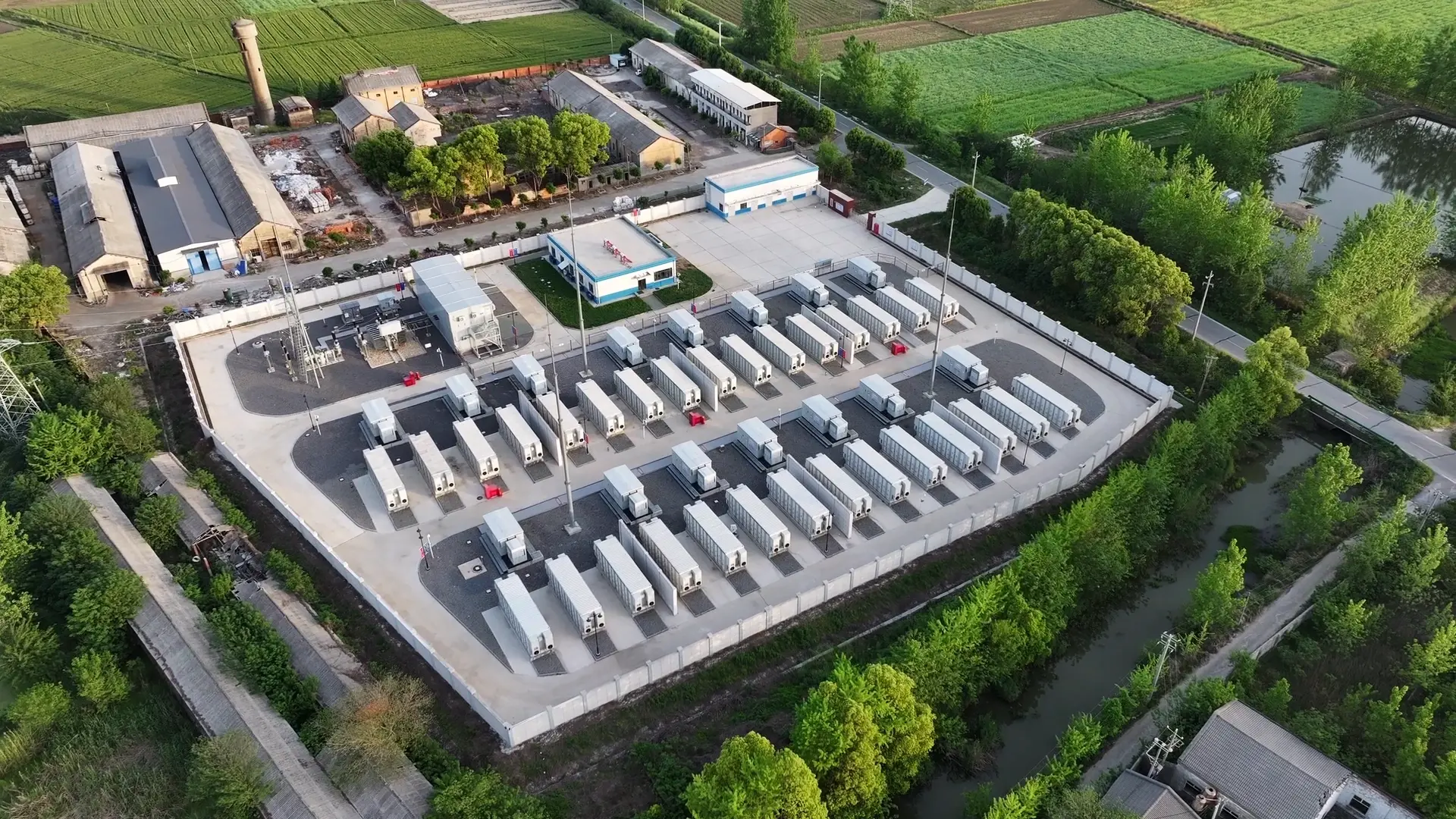Why UPS Battery Maintenance Matters
UPS (Uninterruptible Power Supply) batteries are critical for ensuring uninterrupted power during outages. They protect sensitive equipment, prevent data loss, and maintain business continuity. Among UPS batteries, VRLA and lithium-ion are the most common types. While both serve as reliable backup power sources, their maintenance requirements, lifespan, and performance characteristics differ.
VRLA and Lithium-ion UPS Batteries Maintenance Needs
Different battery types, such as VRLA (Valve-Regulated VRLA) batteries and lithium-ion UPS batteries, have distinct maintenance requirements. Understanding these needs helps prevent unexpected failures and optimize performance.
VRLA and Lithium-ion UPS Batteries Maintenance Needs
Different battery types, such as VRLA (Valve-Regulated VRLA) batteries and lithium-ion UPS batteries, have distinct maintenance requirements. Understanding these needs helps prevent unexpected failures and optimize performance.
1. Optimal Environment for UPS Batteries
● VRLA batteries: Store in a cool, dry, and well-ventilated area. Avoid direct sunlight, high humidity, and dust. Ideal temperature range is 20–25°C.● Lithium-ion batteries: Also require a stable, dry environment. Sensitive to high temperatures, which can shorten battery life. Always follow the manufacturer’s recommended temperature range.2. Regular Monitoring and Diagnostics
● VRLA batteries: Perform voltage checks and load testing monthly or quarterly to detect capacity loss or signs of aging. Inspect for swelling, leaks, or corrosion.
2. Regular Monitoring and Diagnostics
● VRLA batteries: Perform voltage checks and load testing monthly or quarterly to detect capacity loss or signs of aging. Inspect for swelling, leaks, or corrosion.● Lithium-ion UPS batteries: Use the Battery Management System (BMS) for continuous monitoring. Check for alerts on voltage, temperature, and charge cycles. Early detection of anomalies helps prevent UPS downtime.3. Preventive Inspections
● VRLA batteries: Conduct regular physical inspections and electrolyte level checks.
3. Preventive Inspections
● VRLA batteries: Conduct regular physical inspections and electrolyte level checks.● Lithium-ion batteries: Inspect the battery physically and review system logs at least semi-annually or annually.4. Documentation of Battery Health
● Keep detailed records of inspections, tests, and maintenance activities for both VRLA and lithium-ion batteries.
4. Documentation of Battery Health
● Keep detailed records of inspections, tests, and maintenance activities for both VRLA and lithium-ion batteries.● Historical records also support data-driven maintenance decisions for long-term battery management.
Conclusion
Although both VRLA and lithium-ion UPS batteries ensure reliable backup power, their maintenance needs differ significantly. VRLA batteries require more hands-on care, including electrolyte management, temperature control, and load testing. Lithium-ion batteries are largely maintenance-free, relying on BMS monitoring and proper environmental conditions.




























 2025-08-19
2025-08-19 Name
Name Tel
Tel Email
Email Country
Country Company
Company Information
Information